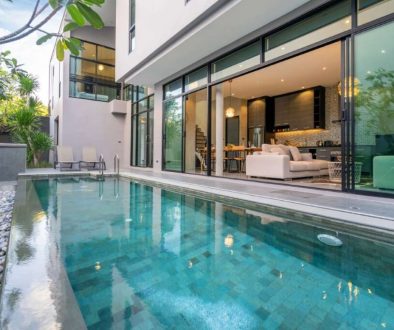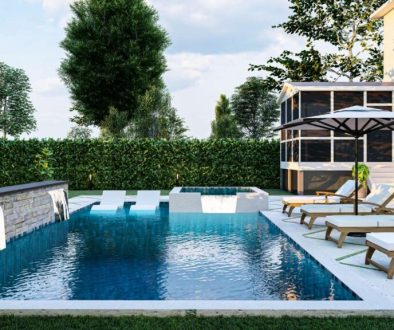Retail Space Design Trends Tenants Are Looking For
Retail Space Design Trends Tenants Are Looking For
In the fast-evolving world of retail, the design of physical spaces has become increasingly crucial in attracting tenants and enhancing customer experience. As consumer preferences shift and technology continues to advance, businesses must adapt their environments to meet new expectations. This article will explore the latest retail space design trends that tenants are looking for, highlighting elements that create welcoming, efficient, and engaging shopping environments.
Emphasis on Sustainability and Eco-Friendly Designs
One of the most significant trends in retail space design is the focus on sustainability. Tenants are increasingly aware of their environmental footprint, and they prefer spaces that reflect this commitment. Eco-friendly designs incorporate materials that are sustainable, renewable, and recyclable. For instance, using reclaimed wood, bamboo flooring, and low-VOC paints not only minimizes environmental impact but also creates a unique aesthetic that appeals to eco-conscious consumers.
Moreover, incorporating natural elements such as green walls, indoor plants, and ample natural light can enhance the shopping atmosphere while improving air quality. According to a study by the World Green Building Council, green buildings can achieve a reduction in energy use by up to 50%, which is a compelling selling point for tenants concerned about operational costs.
Retailers like IKEA have successfully implemented these principles, creating spaces that are not only visually appealing but also resonate with their sustainability values. This trend underscores the importance of integrating environmental stewardship into retail space design to attract eco-minded businesses and customers alike.
Experiential Retail Spaces
The rise of e-commerce has driven retailers to innovate by creating experiential spaces that offer more than just a transaction. Today’s tenants seek retail environments that provide unique experiences, allowing customers to immerse themselves in the brand. This can range from interactive displays to experiential zones where customers can participate in workshops or product demonstrations.
For example, a cosmetics retailer might include beauty bars where customers can try out products before purchasing, or a clothing store could offer styling sessions. This shift towards experiential retail encourages consumers to engage with the brand on a deeper level, increasing the likelihood of purchase and fostering brand loyalty.
Research indicates that 78% of consumers prefer to spend money on experiences rather than material possessions. Retailers who understand this and create spaces that offer memorable experiences will likely see higher foot traffic and sales. Creating an environment that encourages interaction and engagement is essential for attracting today’s discerning tenants.
Technology Integration: The Smart Retail Space
As technology continues to evolve, retail spaces are increasingly integrating tech solutions to enhance the shopping experience. From smart mirrors that allow customers to try on clothes virtually to mobile payment systems that streamline the checkout process, technology is redefining how consumers interact with retailers.
Moreover, the use of data analytics can help retailers understand customer behavior, enabling them to tailor their offerings accordingly. For instance, retailers can use foot traffic data to optimize store layouts or implement personalized marketing strategies based on customer preferences.
Another example is the rise of contactless payment systems, which have seen increased adoption due to the COVID-19 pandemic. Retail spaces that incorporate such technologies not only enhance convenience for customers but also portray a modern and innovative image that attracts tech-savvy tenants.
Open and Flexible Layouts
Another trend gaining traction in retail space design is the move towards open and flexible layouts. Traditional retail spaces with rigid configurations are becoming less favorable as tenants prefer adaptable designs that can accommodate various merchandising strategies. Open layouts allow for easy navigation and create a sense of spaciousness, making the shopping experience more enjoyable.
Flexibility in design is also critical for retailers who wish to quickly change displays or adapt to seasonal trends. Spaces that can be easily reconfigured to accommodate new products or promotional events are more appealing to potential tenants. This adaptability can lead to increased sales and a better customer experience, as retailers can respond swiftly to market demands and consumer preferences.
Successful retailers, like Apple and Nike, often utilize open layouts to encourage exploration and discovery, creating an inviting atmosphere that enhances customer engagement and satisfaction.
Focus on Community and Local Engagement
Modern retail spaces are increasingly becoming community hubs, with tenants looking for designs that foster connection and engagement. This trend emphasizes the importance of creating spaces that reflect local culture and provide opportunities for community interaction. Retailers are incorporating elements that encourage socializing, such as seating areas, cafes, and event spaces.
By hosting local events, workshops, or pop-up markets, retailers can strengthen their ties to the community while attracting foot traffic. This approach not only enhances the shopping experience but also positions the retail space as a vital part of the community fabric.
For instance, many shopping centers now include community gardens or public art installations, providing a welcoming environment for both shoppers and residents. This focus on community engagement can significantly enhance a tenant’s brand image and appeal to consumers who prioritize supporting local businesses.
Health and Wellness Features
In light of recent global health concerns, health and wellness are more prominent in retail space design than ever before. Tenants are increasingly interested in incorporating features that promote wellness, such as improved ventilation, natural lighting, and sanitary facilities. Spaces designed with health in mind can enhance the overall shopping experience, making customers feel safer and more comfortable.
Implementing features like touchless entry systems, sanitization stations, and adequate spacing for social distancing can significantly boost consumer confidence. Retailers that can successfully integrate these health-conscious elements into their designs will likely attract tenants who prioritize safety and wellness.
Additionally, incorporating wellness-focused products or services—such as organic foods, fitness classes, or wellness workshops—can create a holistic shopping environment that appeals to health-conscious consumers.
Customizable and Brand-Focused Designs
As brands strive to create unique identities, customizable and brand-focused retail space designs are becoming essential. Tenants want spaces that reflect their brand ethos and resonate with their target audience. This means incorporating branding elements into the design, such as color schemes, logos, and themed decor that align with the company’s image.
Moreover, flexibility in design allows retailers to tailor their space to specific campaigns or seasonal promotions, enhancing their marketing efforts. For example, a fashion retailer may want to change its layout or decor based on the latest seasonal collection, and adaptable design makes this possible.
Retailers are increasingly investing in custom fixtures, signage, and layouts that not only showcase their products but also create a cohesive brand experience for customers. This level of customization can significantly enhance customer loyalty and brand recognition, making it a worthwhile investment for tenants.
Conclusion
As the retail landscape continues to evolve, understanding and implementing the latest design trends is crucial for attracting tenants and enhancing customer experiences. Emphasizing sustainability, creating experiential environments, integrating technology, and focusing on community engagement are just a few of the key trends shaping modern retail spaces.
By prioritizing these design elements, retail spaces can not only meet but exceed tenant expectations, driving foot traffic and increasing sales. As we move forward, the retail sector will need to remain agile and responsive to emerging trends to thrive in an increasingly competitive market.
For retailers looking to enhance their spaces or for those considering entering the retail market, understanding these trends and their implications is essential. Explore our services, and let’s create a retail environment that attracts customers and drives success together.



